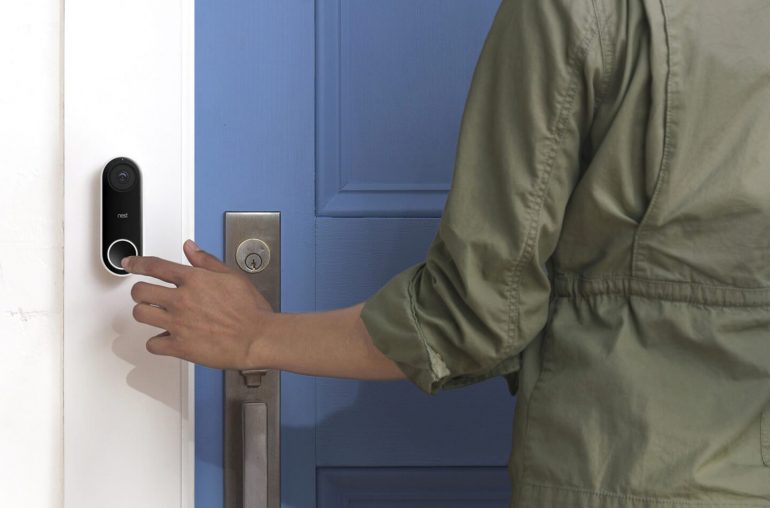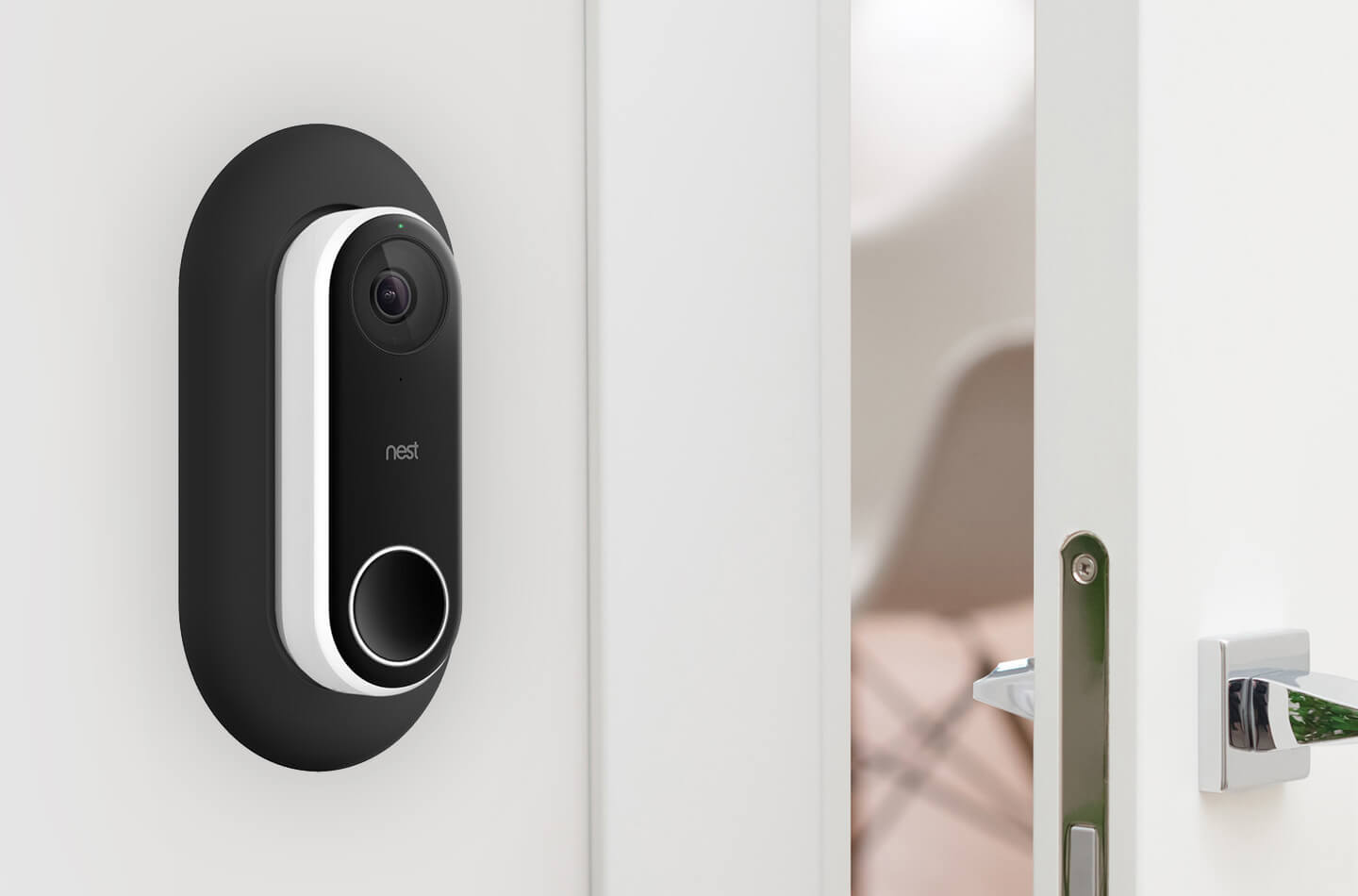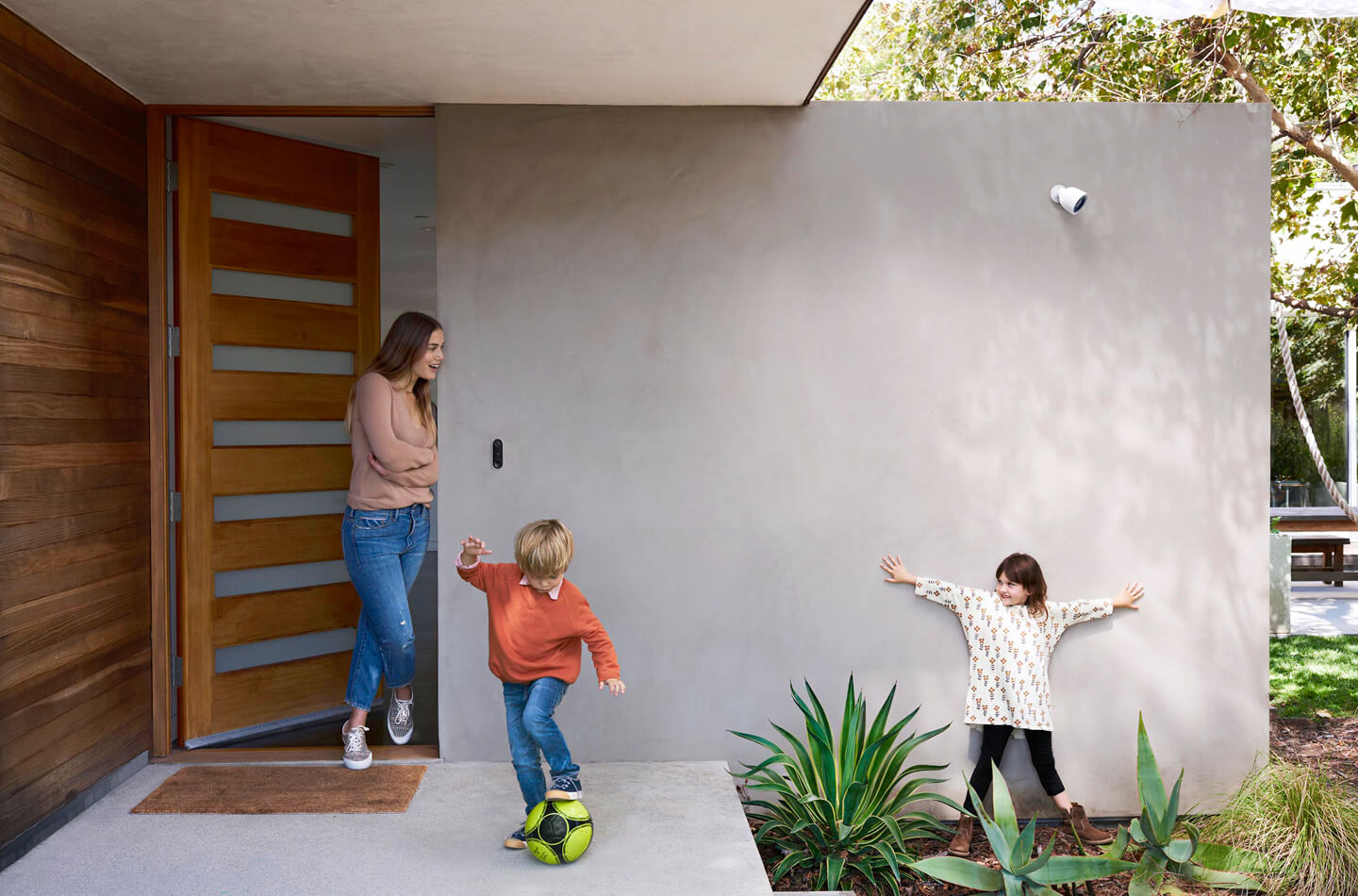When was the last time you thought about your doorbell? Of all the hardware built into our homes, this one probably gets the least amount of attention – until a donation solicitor startles you off the sofa with its earth-shattering, unholy bell just after you’ve fired up Netflix. But maybe that’s just me.
Regardless, there are as many practical reasons to invest in a smart video doorbell as there are convenient ones. Helping you decide whether to answer the door is a good one, but security is arguably more important. Video doorbells let you keep an eye on anything and everything happening around your front door. We tend to lock up our homes most securely at night, but surprisingly, the majority of residential break-ins take place during the day while we’re at work. A common tactic of burglars is to ring the bell to check if anyone’s home. Stupidly simple yet effective.
Motion Detection and power
A video doorbell like the Nest doorbell doesn’t just let you see and speak to whomever is ringing your bell – they also capture anyone or anything that’s just lurking around. Motion detection features vary; the most advanced let you set up detection zones (to avoid the busy street, for example) and can distinguish humans from things like animals and cars.
All digital gadgets require power, and although there have been incredible advances in battery technology, there are both advantages and disadvantages to using battery-powered versus grid-powered devices. Remember, though, that during an outage your WiFi doesn’t work either, so anything that relies on WiFi for communication will be down as well. If you find that power outages are cramping your style, it might be worth looking into a home battery.
Wireless doorbells
If your home already has a hardwired traditional doorbell, a wired video doorbell can be powered by those same wires. Keep in mind that depending on the voltage, a new transformer is sometimes required.
With a few tools and a bit of knowledge, it’s possible to install a wired doorbell yourself. Make sure you turn off the power before starting! If you’re even a little unsure, it might be best to consult a professional installer.
If you don’t have an existing hardwired doorbell, you can’t make changes to the property (if renting, for example), or you just plain don’t want to bother with electrical work, a wireless video doorbell is the one for you.
These run on batteries, naturally, so they’ll have to be periodically replaced or recharged. You may want to consider having a backup battery to avoid gaps in use. Keep in mind that video doorbells with batteries are often bulkier than their hardwired counterparts.
Connectivity and video quality
As with all smart home devices, a strong WiFi signal is key. Unfortunately, brick walls do little to improve signal strength, and outdoor devices often need a bit of a boost. Fortunately, solutions do exist!
When it comes to strengthening your home WiFi network, there are too many nuances to get into in this article. But whether you choose an extender, booster, or repeater – all that matters is whether your devices can communicate seamlessly.
The resolution, night vision, and FOV of video doorbells vary greatly. Yes, some top-of-the-line models boast impressively detailed images with endless zoom capabilities, super wide-angle lenses, and owl-like night vision – but depending on your needs might not be worth the additional cost. Consider what you’ll primarily use it for. If security is your biggest concern, a higher-quality camera might be a priority. If you mainly want to know if the knocker is worth getting off the sofa for, you might be just fine with an average-quality camera.
Storage
Storage is always one of the biggest challenges with cameras of any kind. The better the image, the bigger the file, the more storage is needed. Most video doorbells use Cloud storage, which has its pros and cons. On the plus side, it’s safe if the camera is damaged or stolen, and it’s accessible from anywhere. On the minus side, it can use up a lot of bandwidth to upload, and often requires a subscription.
Some video doorbells offer local storage, sometimes in addition to Cloud storage. Be sure to think about what type of storage will suit your needs best when choosing a device.
Smart home integration
For many of us, the ability to connect our devices to our smart home ecosystems is a top priority. Integration with services like Google Assistant, Amazon Alexa, and Apple Homekit let you take advantage of voice control, and 3rd party services like IFTTT let you connect your doorbell to even more services. Maybe you’d like your smart lights to flash when someone’s at the door instead of triggering a chime – helpful for new parents or the hard of hearing community. Actions like this are possible with the right compatibilities; be sure to think about what integrations you desire before purchasing a video doorbell.
This article only covers a few of the features available in video doorbells. However, each brand has their own unique features, from facial recognition to IR motion detection to pre-recorded voice messages. Make sure to look into the additional features offered by the models you’re considering – but as with all smart home devices, the choice ultimately comes down to your needs, wants, and budget.
Advertentie








